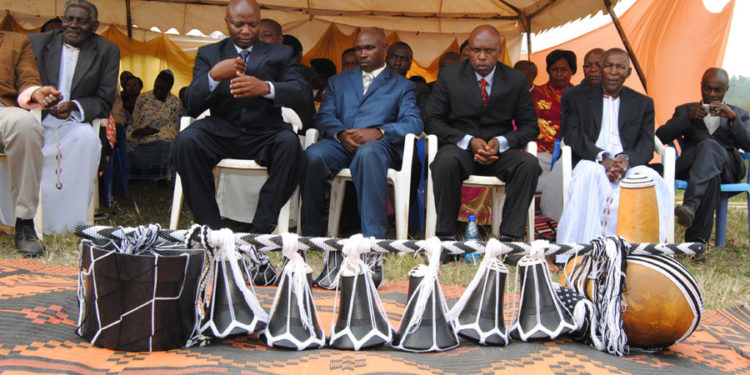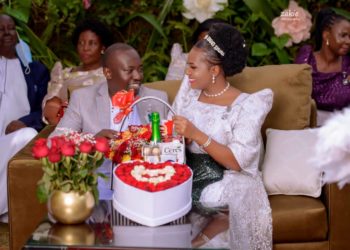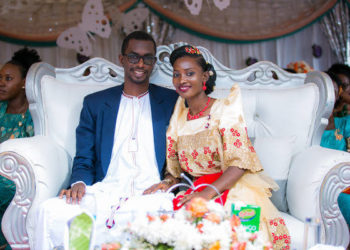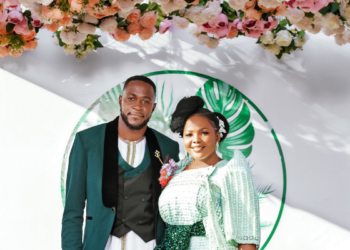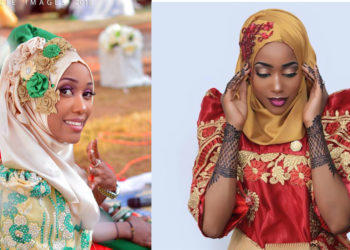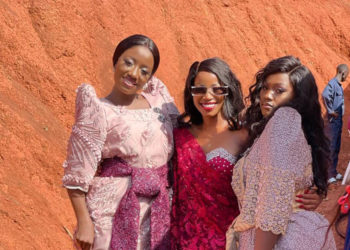By Alex Ashaba
In Ankole (Banyankole) culture, during a giveaway ceremony, it’s mandatory that the bride is always given Omugamba as a package to help her start her family.
Ms Pricilla Musasizi says in the Ankole culture before the marriage, the bride-to-be visits her Aunt for marriage lessons. It is then that the Aunt explains to the bride how she should conduct herself in marriage and prepares Omugamba for her. It is always made of many items for use in a home.
The Omugamba stands for the long stick where the various items are suspended during transportation and display.
Ms Jeneroza Nyambunu 85, from Mpaama village in Ntungamo district says Omugamba was highly used by Bahima (cattle keepers) in Ankole, and the non-cattle keepers later adopted it although it has some items that differ.
She says the difference is in milking pots which the Bahima include and non- Bahima include other items such as a winnowing basket, millet basket.
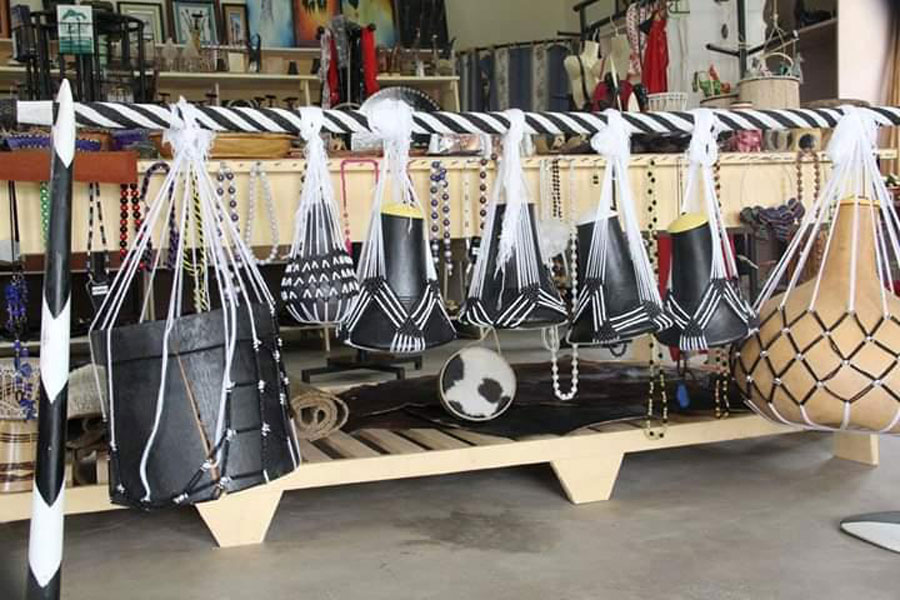
Ms Diane Kabasinguzi who works at Igongo culture center in Mbarara city says each item on the Omugamba has a specific use.
The items include; Milking pot (Ekyazi), churning gourd (Ekishabo), watering trough (Eicuba), small milking pot, Eboha, Enkuyo, Enjemeko, Calabash, winnowing basket, millet basket, and bucket among others.
Omugamba items and their specific use
Ekishaabo (churning gourd)
Kabasinguzi explains that churning gourd is used during churning to get ghee.
She adds that after milking, milk is kept in the kishaabo for some days to allow it to ferment into yogurt before churning it to produce ghee.
The churning process starts early in the morning before the woman goes for any activity.
For non-cattle keepers, the churning gourd is used to keep porridge for the family members.
Engyemeko (A clay pot)
This is a container used for storing warm water for the family head to wash his hands and face.
Eicuba (water trough)
This is a wooden container/ bucket used to draw water from the well and fill the drinking trough during okweshera (the time when cows are provided water for drinking), It can either be in the morning, evening or afternoon.
These days some people who fail to get wooden containers put a bucket on the Omugamba.
Milking pots. These are wooden vessels made of smoked black wood and their cover (lid) is called emihaiha, in local language of Runyankore. The is woven with sisal and fibers in geometric patterns.
The number of milking pots on omugamba is always even in number. The milking pots are used to drink milk by the family members. Omugamba also has small milking pots used by the children to drink milk only.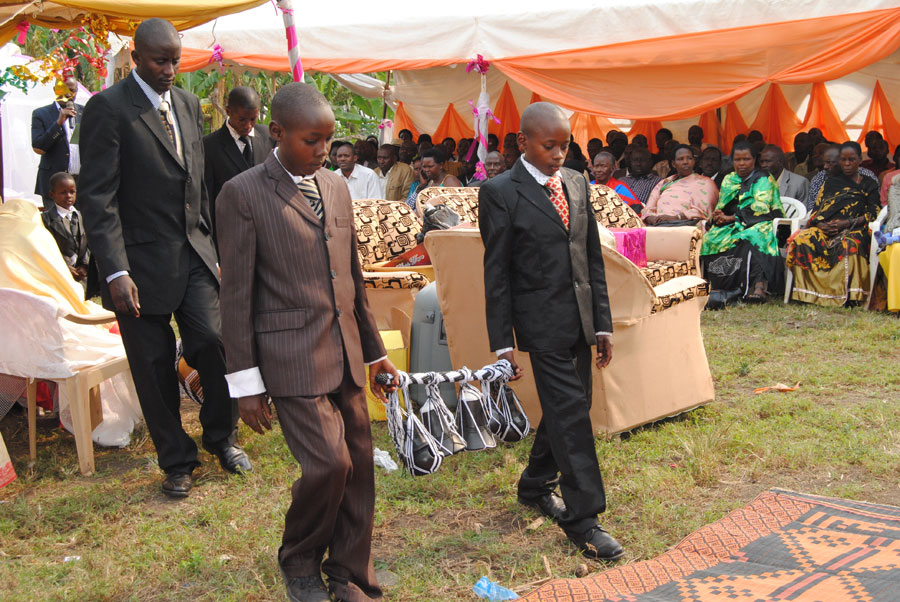
Rukomyo
This is a perfume pot used for personal hygiene. It is a pot with four holes. The woman is supposedd to look for scented herbs from the bush and put them in the pot and burn them to produce a scented smoke, which is used as a perfume for women.
Ekicunga
This is a clay pot used to fumigate milk pots/ gourds.
Akacwende
This is a calabash used for storing perfumed ghee which is used as petroleum jelly by women. The ghee in the calabash is mixed with scented herbs to produce a nice scent.
This broom-like item made of sisal. This is used during milking to keep flies away from the cow. While the man milks the cow, his child or wife assist him to keep flies.
Emboha
This is a rope made of sisal that is used to tie the hind legs of a cow during milking so that it doesn’t move or kick the milking pot.
Winnowing basket
The bride (woman) uses it to toss the grain (beans, sorghum, and millet) into the air where the wind sweeps away the chaff. It is used to separate the corn kernels from the outer husks or chaff.
Millet basket
This is used during the eating of millet.
The customs of Omugamba

During the giveaway ceremony, Omugamba is carried by the brothers of the bride from the house where it is kept to the ceremony.
Ms Regina Kebiragiro from Mpaama village in Ntungamo district says without Omugamba the father of the groom cannot accept other gifts from the bride’s family (Emihigiro).
She says when the Omugamba is moved out of the house, it marks the beginning of the giveaway ceremony and when the bride’s entourage gets out, they play cultural songs for giveaway. Today some people play Christian songs as a symbol that the bride is from Christian family.
She then comes out for the giveaway ceremony escorted by her parents and Aunt.
The bride brothers cannot put down Omugamba; they keep standing waiting for people from the groom’s side to come and receive it. It is always received by her sisters-in-law (Omuramukazi).
There after, the groom’s side is led by a spokesperson (Katerarume) who looks for one person (man or woman) to do a recital (Ekyevugo). The grooms’ entourage stands behind him as he steps forward and mutters the long sedateness to the audience.
During the recital (Ekyevugo), the audiences from both sides applaud him/her and when the parents of the bride appreciate the recital, they clap their hands and the Omugamba is given away.
The recital is the only culturally accepted appreciation to the bride’s family.
The ritual of Omugamba leads the bride from her father’s home to the grooms’ home.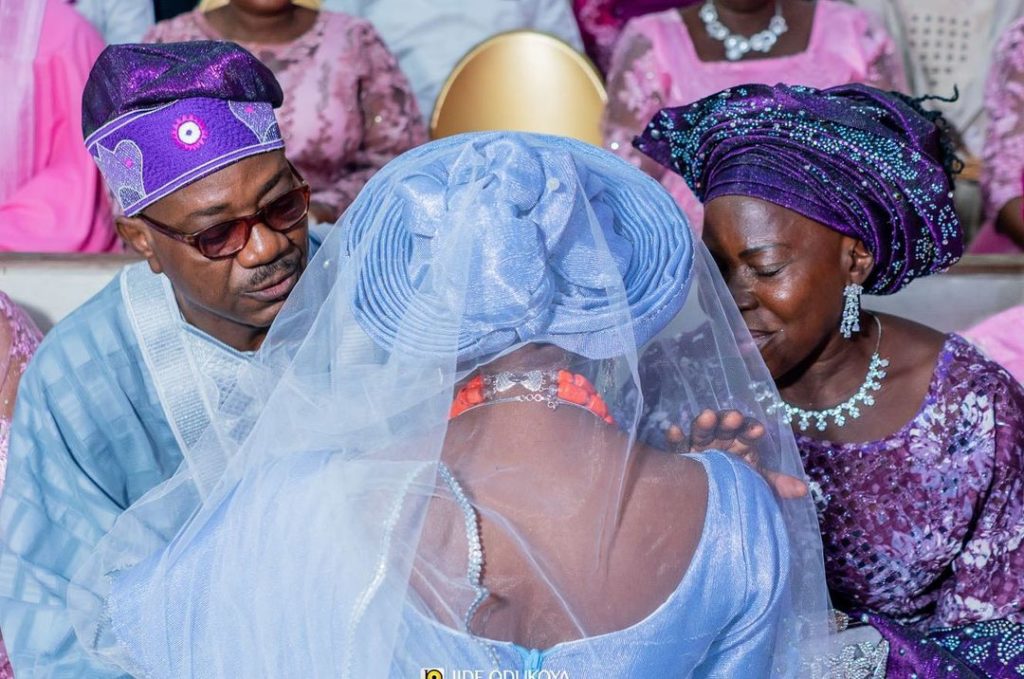
Kabasinguzi says Omugamba is accompanied by other gifts from the family members of the bride that may include chairs, mattress, bed, cups, cows among others.
Nyambunu says Omugamba is one way for parents to tell their daughter that they honour her and are starting a home for her.
She explains that in the olden times, when the girl misbehaved while growing up, for example, if she became pregnant, she would be banished and would not receive such a decent send-off from her parents.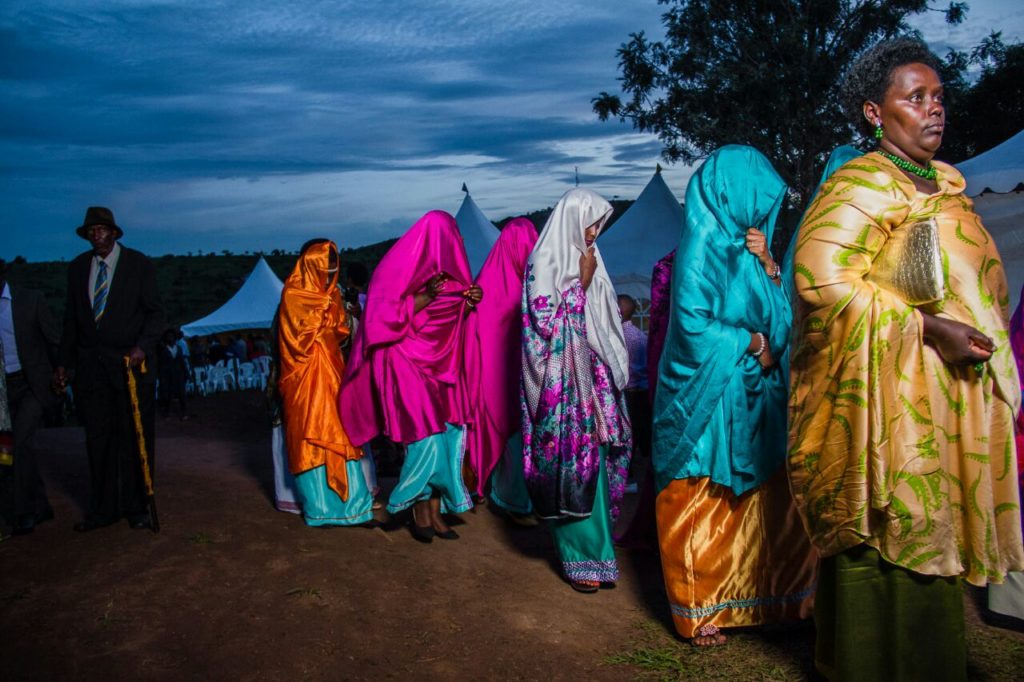
Ms Rachael Karungi from Mpiira Village in Ibanda Municipality says after giving it away ( The Omugamba), its items are removed by the cousin sister of the groom’s mother and kept.
She says the Omugamba (The stick on which the items are suspended) is kept by the groom’s father as a symbol to show that his son has married and he is the one (father) who has paid the bride price.
Karungi says according to the Ankole culture, the grooms’ father is the one who has married not his son because he (the father) is that one who gives out his cows for bride price.
The items on Omugamba are initially kept by the mother-in-law and when the bride comes home, the mother-in-law gives them to her.
The bride with the knowledge from her Aunt starts using the items on Omugamba depending on their specific use.
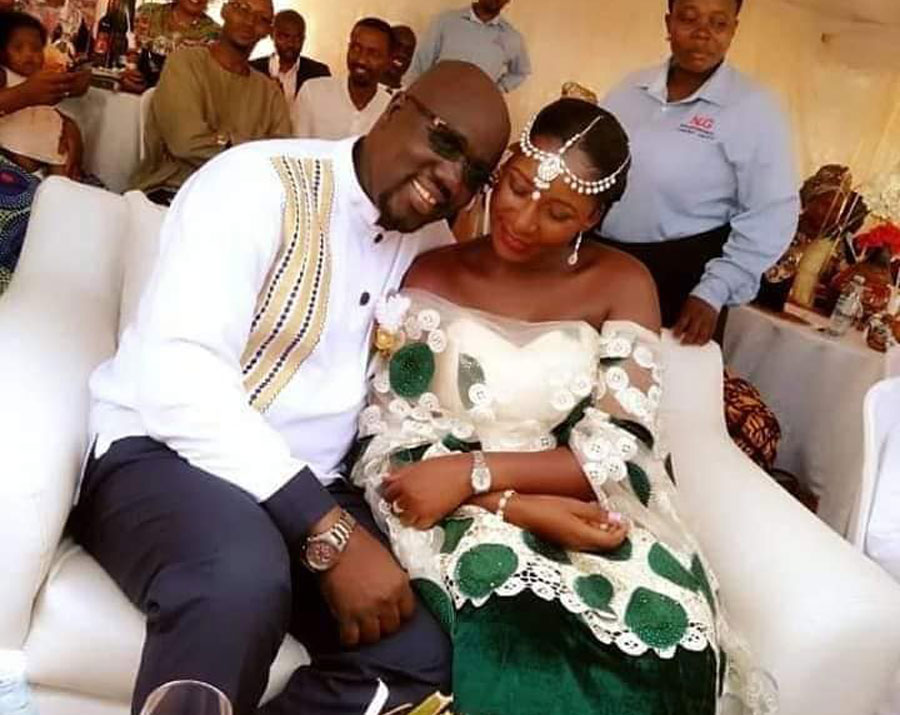
Because of modernity, many families no longer consider Omugamba very important. After the giveaway, both the bride and groom keep them away.
Karungi says because many girls today get married and fail to follow the right procedure of Ankole culture and others have ignored the giveaway ceremony. This in turn and has greatly affected the use of Omugamba and that is why it’s dying out.

